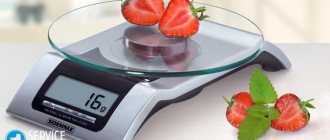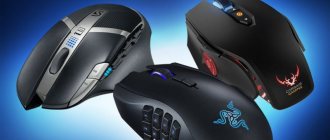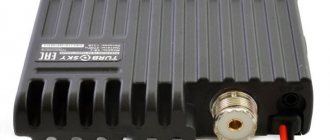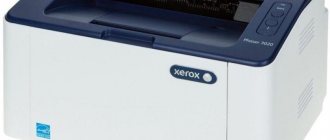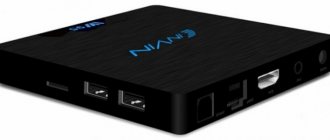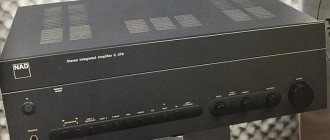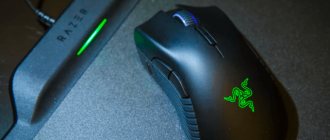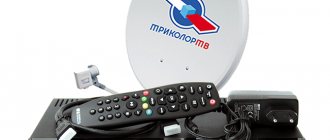Playing musical instruments helps you relax, take a break from the daily routine, and engage in creativity by selecting and processing your favorite melodies to suit your taste. A synthesizer is exactly what is best suited for this. Compact and lightweight, it will not take up much space in the apartment, and will sound no worse than a piano or guitar. Its appearance will decorate any interior. It will be useful for children studying at a music school, professional musicians and simply creative individuals who want to try themselves as a DJ or arranger.
Criterias of choice
To buy the right synthesizer for a beginner, you can’t focus only on cost. First of all, you need to study the main characteristics.
Number of keys. The number of octaves and range depend on this parameter. The keys can be:
- 88 - 7 octaves, like a regular piano;
- 76 - 6 octaves;
- 61 - 5 octaves, such models are very common.
The greatest possibilities are provided by instruments with 88 keys. If you want to play complex pieces of music, then the number of keys should be maximum.
Key type. The variety is represented by two types of keys:
- mechanical, or unweighted - the volume and tone of the sound do not depend on the force of pressing;
- dynamic or weighted - the keys are sensitive to pressure.
For serious work, it is better to choose a dynamic weighted keyboard.
Auto accompaniment. The best amateur models are equipped with automatic accompaniment. If you enable this function when playing, the sound of the synthesizer will be complemented by the bass of the guitar, drums, and wind instruments. The number of accompaniment styles can range from 30 to 200.
Voices. The synthesizer can simulate playing not only the piano, but also other instruments - guitar, violin, drums. Amateur models usually have about 200-300 options, while the best professional models have up to 700.
Effects. In addition to accompaniment, the synthesizer can offer built-in chorus, reverb, and so on to add richness to the sound.
The simplest models provide only 3-10 effects, while the best devices have 50 or more.
Ten basic indicators - the basis for choosing the right synthesizer
To accurately navigate the saturated electronic music market, it is enough to evaluate your future purchase using the following points:
1. Size of keys . It comes in standard, mini, even micro sizes. However, in order for the hand to adapt from the very beginning to the generally accepted width and length without the need to relearn it later, experts advise purchasing only rows with standard dimensions - even for a five-year-old child.
2. Number of keys . For 7 octaves plus three there are traditionally 88 of them. However, this entire set is rarely used in practice. Therefore, along with the traditional one, there are abbreviated formats:
- 61, five octave;
- 73, six octave;
- 76 - 6 octaves with three additional ones.
There is also a keyboard minimum of 49 units, which, as practice clearly demonstrates, is not enough to fully reproduce more or less advanced creative ideas.
However, the pitch amplitude does not directly depend on how many keys there are. The shortened format does not mean that it is impossible in principle to reproduce 7 octave intervals. In this case, there is a “transform” option, which shifts the overall tonality down or up.
3. Keyboard dynamics (or its activity). The force of pressure in the passive version does not affect volume and color, while in the dynamic (active) variation these parameters are directly determined by pressure. The second, active, type provides a wider range of expressive means, so experts recommend choosing this one. This functionality is most often referred to as “Touch Response”.
4. Polyphony . Corresponds to the number of sounds simultaneously played with a single press.
So, when voicing only the melody, it is equal to one. If each touch is immediately complemented by bass, guitar-rhythm, drums and four-tones, then a polyphony of eight will be required.
This number naturally grows with the addition of other impressive effects - reverb, volume, chorus and other beauties. Therefore, even for beginners, experts recommend a value of no lower than 32. The complete standard “ruler” looks like this: 24, 32, 48, 64, 128.
5. Manufacturer . It is best to focus on well-known companies with a well-deserved, time-tested reputation, for example:
- "Casio". The lineup starts with children's, educational, and reaches a fairly high level.
- "Yamaha". A concern with more than a century of history. It stands out for its ideal quality and brilliant parameters in an adequate price niche.
- "Roland". The company was founded in Japan in 1972. Produces amateur and professional assortment, stations and auto accompanists.
- "Korg." It's the Japanese again, making their way into the electronic audio market since the 1960s. Now the most complex audio unit Korg Triton Studio is considered one of the most powerful in the world. The corporation specializes in expensive equipment for professionals.
- "Kurzweil." The company was founded in 1982 by Raymond Kurzweil. Produces audio synthesizers for studio, home and stage lines. It is especially famous for its digital pianos and excellent audio data. The lower price threshold for products with famous acoustics is 8,000 rubles.
6. Sound (timbre) and style (rhythmic) range. As a rule, more than forty styles and timbres are used only by rare virtuoso masters. However, to select even these forty favorites, you need to try at least a hundred. This is the minimum set for more or less serious work.
7. Parameters of the sequencer , the “manager” of recording on several audio tracks .
You can play in three ways:
- on one specific instrument, the “singing” of which is synthesized by the device - piano, saxophone, guitar;
- accompany the main theme with styles built into the equipment;
- record separate sound tracks, and then bring them together - after recording a saxophone, layer a virtuoso guitar-bass line on it, then shade it with drums; further, as they say, to taste.
Sequencers are responsible for individual recordings, their storage and further synchronization. In accordance with the number of audio tracks, they are distributed in the following gradation: 1, 2, 6, 17. The higher this value, the more expensive the entire installation.
In addition, sequencers are equipped with memory of varying sizes. It is determined by the stored music array.
8. Work in training mode . In the event that equipment is purchased for children, this is the most important and priority point. Naturally, a real teacher is irreplaceable, but the potential of modern developments impresses not only young people, but also adults. Some even give grades based on the results of their “lessons.”
The most effective for learning will be a modification that, when mastering the next sequence of notes, brightly highlights the place of the next press. Yamaha developers especially love this move (“Light Key”).
9. Equipping with external memory and connecting equipment . This is clearly indicated by additional connector sockets.
It is convenient to immediately record the created composition via the built-in slots onto a memory cartridge or flash card. They should be distinguished from USB ports, which are used to connect to other external equipment - a computer, for example.
It is also necessary to evaluate whether the design allows for the connection of other external devices - headphones, sound amplifiers, pedal devices - to the addressable ports.
In addition, advanced developments are equipped with a multi-page virtual menu, as well as an operating system that is updated via the Internet.
10. Possible variations and additions
Instead of a full set, you can only purchase a midi keyboard, which controls the virtual music synthesized by the computer. Such a purchase will cost much less - about 5,000 rubles. By connecting to an editing program like Cubase, the bank of audio data and effects becomes virtually inexhaustible.
If you also plan to perform vocals , you will need a device with a vocoder - a device for digitizing, synthesizing, and converting voices.
It would not be amiss to have a power supply with a voltage stabilizer that protects against sudden overloads and network outages.
Racks with X-frames . There are ordinary, single-frame, suitable for relatively light modifications, and double-frame, increased stability - for heavy ones. In addition, there are one- and two-level racks - respectively, to accommodate one or two devices.
Pedals . Addressed to those who need the most “piano” performance. Available in two types:
- volume controls;
- “sustain”, prolonging the sound after pressing.
Combi is a portable amplifying sound reproduction system. Required only for studios. At home, there is enough power from the audio device already included in the design.
The case is useful for transportation. Which one to buy is decided in accordance with the overall dimensions.
Which brand of synthesizer is better?
Several manufacturers are the most famous.
- Yamaha, specializing in the creation of musical instruments since 1887;
- Korg, on the market since the 1960s, is respected by musicians;
- Roland - synthesizers combine quality, compactness and reasonable cost;
- Casio is a well-known manufacturer of budget models.
Most of the best synthesizer manufacturers on the music market are represented by Japanese companies.
Professional synthesizers
Roland FA-06
It has a plastic case, due to which this device does not weigh too much for professional equipment - only 5.7 kg. For an instrument with 61 keys, the overall dimensions are also small - 100x30x10 cm. All connectors for connecting additional devices, including the power cable, are located on the rear panel. The product is equipped with anti-slip rubber feet. The connector for the power supply is additionally reinforced with a rubberized ring, thanks to which the plug is fixed as tightly as possible. Near it there is a special jumper that allows you to secure the cable and protect it from accidental jerks. There is a line output for using a connection in stereo format with the ability to balance channels.
More: Top 10 best professional microphones
The keys have a short stroke and quickly return to their original position. They are a real pleasure to play, although they will take some time to adapt to. The interface of the synthesizer is quite simple, so you can start working with it without studying the instructions. All main functions have separate buttons and controls. The synthesizer boots up very quickly after switching on - about 10 seconds is enough. A large full-color LCD display is located in the center. Although it is quite informative, it will not show unnecessary data. All sounds produced are sorted into sections.
Advantages:
- High speed;
- Large color display;
- Possibility of connecting a stereo system;
- Ease of use.
Flaws:
- The key travel is short - you have to get used to it.
Roland FA-06
Synthesizer Yamaha PSR-SX700
The device offers the user literally perfect sound, a wide range of different instruments and increased functionality. Compared to the previous generation of professional synthesizers, the device has an improved design, a keyboard of the highest quality, and an optimized FX section. The latter includes a set of equalizers, compressors, reverbs and many other effects. The synthesizer supports polyphony of 128 voices and has an AWM tone generator. There is an organ-type keyboard installed here, consisting of 61 keys, FSB format. The response can be adjusted. The acoustic system is represented by two speakers, the power of each of which is 15 W. For ease of control of functions, there is a touch-type display, the diagonal of which is 7 inches, there is also a joystick, many buttons, three regulators and an encoder.
If necessary, the keyboard can be divided into four independent zones, with specific instruments assigned to each of them. Buttons are usually used to work with settings and effects. The library consists of 1027 presets consisting of keys, percussion organs and so on, as many as 400 rhythmic patterns are provided for accompaniment. Among the connectors there are inputs for connecting a guitar, a microphone, the built-in memory capacity is 400 MB, there are also two USB connectors, and the same number of outputs for pedals. The weight of the device is quite serious - 12 kg.
Advantages:
- Quite loud sound;
- Wide range of possibilities;
- All necessary additional connectors are available;
- Excellent workmanship of the instrument;
- Reasonable price for a professional synthesizer.
Flaws:
- Not detected.
Yamaha PSR SX700 Demo
Synthesizer Yamaha PSR-SX700
KORG Pa600
The synthesizer is a fairly powerful professional-type arrangement station, which is very popular among professional musicians. It has an automatic accompaniment function. The keyboard here is unweighted, has 61 keys, and they are sensitive to both speed and pressure. The model is equipped with powerful polyphony of 128 voices. There are even more tones - over 950, and there are also enough accompaniment styles for professional use - more than 360. The drum set includes 64 variations. In the central part of the product there is a fairly large touch-type liquid crystal display, the diagonal of which is 7 inches with a resolution of 800x480 pixels. This allows you to quickly adjust any user settings, make changes to them, save them, and so on.
The equipment memory is designed for 1200 user styles, there is 96 MB of RAM. You can use all the capabilities of this equipment directly during a performance - this is exactly where the touch screen will be useful. The sound quality is very high, so the instrument is suitable even for performances in philharmonic halls or conservatories.
Advantages:
- The kit includes a control pedal;
- A touch display is provided;
- The synthesizer is equipped with a transpose function;
- Has a built-in mid-power speaker system;
- Convenient to use.
Flaws:
- High price.
KORG Pa600
The best budget synthesizers under 10,000 rubles
CASIO CT-S100
This instrument, produced by a world famous brand, will be a worthy gift for any musician, especially for a beginner. The model promotes good learning, as well as the first familiarization with notes and octaves. Mixed power: you can use 6 AA batteries or connect a regular power cord to the connector. Autonomous recharging is useful on long trips or on tour performances. The upper part of the case has a durable handle for conveniently carrying the tool, and its compact dimensions and standard black style will add zest to any interior design.
Advantages
- Power supply is possible from the mains and batteries
- large selection of tones and octaves
- full size keys
- compact size
- low cost
Flaws
- Since the model is semi-professional, it is not suitable for in-depth study of music
- no pedal input
- short power cord
Tesler KB-6190
This tool attracts attention primarily due to its price - and for some, this parameter will become critical. The price of the synthesizer is such that it couldn’t be more affordable. The functionality here is limited - there are no connectors for pedals (but there is USB), and there are only 200 built-in tones. In the best Chinese traditions, the manufacturer is trying to attract attention with “component” acoustics - next to both speakers you can see “tweeters” and even bass reflex holes. To be honest, it’s hard to say what spoils the sound more – the acoustics or the synthesizer itself; a good amplifier and acoustics somewhat correct the situation. The training mode is common for inexpensive synthesizers, using built-in melodies with prompts on the display. It reads well enough that the “tutorial” here is usable and not added for show. The keyboard is traditional unweighted. Compared to more expensive instruments, it is frankly unpleasant due to its plasticity, but here it is worth remembering again the price of the synthesizer. He fully justifies it.
Advantages
- Extremely affordable price
- It’s not a pity to put it on the mezzanine if the passion to learn how to play disappears
Flaws
- Flat, unnatural sound
- Frankly cheap keyboard
CASIO SA-77
One of the simplest, inexpensive synthesizers, designed to teach beginning musicians the basics of musical notation. It has a rectangular shape with rounded sides, light weight (1.54 kg), and medium dimensions (60.4 x 5.7 x 21.1 cm), making it easy to carry to the right place. It is equipped with 44 small-sized, unweighted keys providing 3.5 octaves of sound, two small speakers of 0.8 W each, and a headphone jack. It operates from the mains, connects to it via a power supply, which is not included in the basic kit, or can operate from a battery. It is easy to use, thanks to the convenient location of all the elements that influence the creation/playing of melodies. There is a small two-line backlit display that shows the main functional parameters when you select them, 8-voice polyphony, 100 built-in tones, about 50 songs to learn, 50 different styles, 5 small drum simulators, on/off/transition buttons from piano to organ, as well as the option to turn off the music.
Advantages
- Low price
- Intuitive controls
- Availability of training function
- Informative LCD screen
- There is a hole for connecting headphones
Flaws
- No power supply included
- Small number of tones
CASIO SA-78
This is a fairly high-quality synthesizer, despite the fact that it was originally created specifically for children. First of all, the manufacturers took good care of children's safety. The speakers are protected in such a way that a child cannot reach them in any way. The body is made of high quality matte plastic. The buttons are all made of soft rubber with a sensitive touch. The keys are made of glossy plastic, a little easily soiled, but this is not critical. There are 44 of them here. The synthesizer runs either on batteries or on a special 9.5 V 1 A adapter, which is connected to a special connector located next to the headphone jack. If necessary, you can connect external speakers, which can significantly improve the sound quality of the device. The weight of the device is small - together with six batteries it barely reaches one and a half kilograms. The case has very convenient recesses for carrying it. Even a three-year-old child can easily carry it from place to place without straining himself. At the same time, the device has five additional buttons responsible for the percussion instrument mode, and there are tempo and volume controls. The central part of the device has a monochronous liquid crystal display. It displays a metronome indicating rhythm, staff and other useful information. In addition, there is a large yellow button that switches between piano and organ modes. If the synthesizer is turned on without use for five minutes, it will automatically turn off.
Advantages
- Small overall dimensions and weight of the device
- Quite acceptable sound quality
- Works both from mains and batteries
- Can also be used by adults
Flaws
- Not detected
CASIO SA-47
The design has 32 small keys, which are well suited for children's fingers, but in terms of sound quality, this synthesizer is quite good. Its sound range includes 100 timbres, 50 different musical styles, and 8-note polyphony. In addition, the instrument has 5 buttons responsible for drums, a reed organ mode and a piano mode with a switching function. Due to its compact dimensions, this synthesizer is ideal for young musicians. The weight of the device is small, the keys have a soft stroke, which allows the baby to play on it for a long time, and the fingers will not feel tired. The main thing is to place the synthesizer on a flat surface before turning it on; it will not slide on it due to the presence of rubberized feet. The design is made in retro style. The case is made of high-quality silver plastic with a matte finish, on which dust, fingerprints and other types of contamination will not be visible. There are also reliable and fairly powerful speakers that provide good quality sounds. It is worth noting that the synthesizer is equipped with a liquid crystal display on which you can read all the information necessary for the user. The device has a training mode: it includes 10 melodies that the baby is asked to repeat. If necessary, you can connect headphones.
Advantages
- Superior sound quality
- Small overall dimensions
- Provides an informative LCD display
- High quality build
- The weight is quite suitable for a small child
- Operates on batteries or accumulators, can be powered from the mains
Flaws
- Some users feel that the speakers sound quiet
Keyboard
Modern synthesizers can be made in the form of small desktop modules without a keyboard, as well as with a very compact keyboard in the form of buttons or touch panels. But still, most models are equipped with a classic keyboard with keys that vary in size, number and type.
Depending on the model and tasks, the keyboard can have 25, 32, 37, 49, 61, 73, 76 and 88 keys. Specific and compact synthesizers have from one to four octaves, but for free two-handed performance, instruments from five octaves are chosen.
According to mechanics, keyboards are divided into:
- Synth or organ type keys (unweighted). They press very easily, are light in weight, made of plastic and equipped with a spring mechanism. The size of such keys may be smaller than those of a piano, which affects the size of the instrument. The lightness of the keys contributes to the speed of the game. But this keyboard is not suitable for learning to play the piano.
- Semi-weighted keys. They have a spring mechanism, but with greater resistance and time for the keys to return to their original position, thereby bringing them closer to a weighted keyboard.
- Hammer (weighted) keyboard. Provides the closest possible sensation to playing an acoustic instrument, respecting all the nuances. The keys are heavy and of high quality.
An important keyboard parameter is velocity sensitivity. It is responsible for the volume of the note when pressed: the slower the touch, the quieter the note sounds and vice versa.
It is also worth paying attention to the presence of aftertouch, the ability to change the character of the sound, which is achieved by applying stronger pressure to the key after pressing and releasing the sound.
Best Budget Synthesizers for Learning
YAMAHA PSR-E363
A stylish synthesizer with a full-size semi-weighted keyboard that is sensitive to the pressure of each of the 61 keys. With its impressive dimensions (94.5 x 11.8 x 36.8 cm), it weighs 4.6 kg, which is several times less than most professional devices. The built-in program for teaching the basics (Keys to Success) was developed with the participation of the best music teachers. It is based on a special technique that allows you to learn melodies step by step, following certain instructions/recommendations. The presence of a useful option to split the keyboard into 2 makes it possible to play any melody in 2 hands, recreating the sounds of various instruments. Metronome, polyphony for 48 voices, 574 timbres, 165 styles/tracks make this technique universal and multifunctional. The Melody Supressor function allows you to accompany yourself by connecting an external audio player. You can choose any power supply: either an adapter or batteries.
Advantages
- Pressure sensitive keyboard
- Well thought out training program
- A large number of tones
- Multifunctionality
Flaws
- Large size and weight
- No sound amplifier included
CASIO LK-S250
A rectangular device with rounded corners, a built-in handle for easy transportation, and backlit all dynamic keys, used both at home for training and at outdoor events for creating musical accompaniment. Controlling the synthesizer is the simplest and most intuitive. There is an informative, backlit LCD display. About 400 different tones, 77 rhythms, a reverberation effect including 10 types, 48-note polyphony, 60 built-in melodies, as well as oval speakers of 2 W each are responsible for the sound quality. There are microphone/headphone jacks.
Advantages
- The set includes a music stand and power supply
- Display, backlit keys
- Easy to use
- High quality build and components
- An easy-to-carry handle located at the top of the body
Flaws
- No built-in memory for saving tunes
Medeli M311
The Chinese synthesizer will offer 320 built-in sounds, a not-so-bad training program, and the ability to connect to a PC via a USB connector—the synthesizer can also work as a MIDI keyboard. What will you have to pay for this? For starters, frankly weak acoustics, and we are talking not only about the speakers, but about the sound path as a whole. You can feel the upper octaves being cut back, and there is a noticeable resonance at the bottom of the midrange. The keyboard is a traditional 61-key, unweighted, touch sensitive, but overly light and does not provide adequate feedback. On the other hand, remember the price. Medelli makes it possible to inexpensively start mastering both the keyboard instrument itself and working with a DAW on a computer - and high-quality VSTs in combination with a decent sound card will allow you to get sound that is an order of magnitude better than the “built-in” one. This means that the time of “growing up” can be extended.
Advantages
- MIDI mode
- A good set of tones and accompaniments
- Fairly clear tutorial
Flaws
- Sound quality “for the money”
YAMAHA PSR-F51
A portable synthesizer for beginners from a famous brand, made in a traditional black color. It can be used to create music at home or on the street, thanks to the fact that it operates not only from an adapter, but also from AA batteries. Its weight is 3.4 kg, given its considerable dimensions - 94x10.9x30.6 cm. It has a standard rectangular shape with full-size unweighted keys located on the top panel. Their number reaches 61 pieces. There is a sound amplifier, two speakers with a total power of 5 W, a hole for connecting headphones – 3.5 mm jack. A special feature of this model is the ability to divide the keyboard into two independent parts for paired performance of compositions. The polyphony is quite extensive - 32 voices, it is possible to select instruments (a total of 120 are programmed in the equipment), genres (any of 114). All these parameters allow you not only to play your favorite melodies, but to create your own, unusual in sound and processing. The keyboard learning mode is activated using the built-in metronome.
Advantages
- Comes with a music stand
- Suitable not only for beginners, but also for intermediate level performers
- Compliance with price and quality
- Powered by adapter or rechargeable batteries/AA batteries
- There is a Duo option to split the keyboard into 2 independent ones
Flaws
- There is no way to record created melodies
- Markable surface
Choosing a synthesizer for beginners Added: Mar 20, 2021
To play or learn to play the keyboard, you no longer need to look for or install a huge instrument in your home that is difficult to find and deliver. Choosing the right digital piano or synthesizer is much more difficult. We tell you how and according to what parameters to buy the first instrument for a beginning musician.
The synthesizer is far from the only type of keyboard that can be used for learning and work. The main types, key characteristics and terms associated with choosing a tool can be read here . But if you know that you need an inexpensive synthesizer for beginners, this article is for you.
Types of synthesizers
All synthesizers can be divided into digital (sampler) and analog . Analog synthesizers are popular for their tube sound, but they are difficult to use and require knowledge and experience in sound production. You could say that analog synthesizers belong more to the world of physics than to teaching music.
Therefore, for music schools, home use or live performances, it is worth choosing an instrument with sample synthesis that reproduces previously recorded sounds. A digital synthesizer is the most affordable solution (in terms of cost/ease of learning and use) among all keyboard instruments. There are a huge number of synthesizers on the market with a different set of functions and capabilities, which we will consider below.
Synthesizer keys
It is logical to assume that the more keys, the more complex parts you will be able to perform. But in practice, this rule does not work. Instead of a full-size 88-note keyboard, 5 octaves (61 keys) are sufficient. If you are choosing the first instrument for a little musician, you can pay attention to more portable options with 32, 37 or 46 keys.
On keyboards with 61 or more keys, additional functions are sometimes found: pressure sensitivity or aftertouch. These functions are not needed at the start of training, but will certainly become useful as you gain experience.
Another important parameter is the mechanics of the keys , or how they respond to pressure and return to their original position. It’s easier to understand; budget instruments almost always use synthesizer mechanics, in which there is virtually no key resistance, and the return is carried out by ordinary springs. This is quite enough for the entry level. But if you think about the future, then the best option would be a keyboard with hammer mechanics.
Synthesizer sound
Difficult to understand and important for any musician (even a beginner) is the sound of an instrument. A number of parameters are responsible for it: sound processor, polyphony, number of timbres, accompaniment and the presence of built-in effects.
CPU
The processor is responsible for processing the incoming signal (key press) and producing the desired sound. All manufacturers strive to patent their own sound synthesis system and, depending on the level of the instrument, use a full or stripped-down version of their processor. You can list their models: AHL, AWM, RGE. But for novice users, these names will not provide the necessary information. Therefore, it is worth paying attention to other factors influencing sound formation:
Polyphony
Polyphony is the number of sounds played simultaneously. Children's “playing” instruments provide polyphony from 1 (monophony) to 8 voices. For entry-level professional instruments, these are 32, 64 or more voices. This is quite enough for learning.
Number of tones
In a synthesizer, timbre refers to the recorded sound of an instrument (piano, grand piano, wind instruments, etc.). And the total number of timbres indicates the number of sounds built into the synthesizer. The more timbres, the richer the performer's capabilities.
It is difficult to name the optimal value for the number of timbres. For example, in the synthesizers presented in our catalog, the lower value is 42. But in practice, 1-2 high-quality sounds that are used constantly and do not get boring are much more important. The only way to determine whether you like them is by testing the tool.
Auto accompaniment
The presence of auto accompaniment (built-in styles) and rhythms allows one performer to create the sound of an ensemble or orchestra. Auto-accompaniment styles determine the number of possible variants of rhythms and melodies for the synthesizer accompaniment; they can be from 4 to 2000+. There are models of synthesizers and digital pianos without accompaniment. They are intended more for professionals than for developing performance skills.
Built-in effects
Effects are not the least important in shaping sound. They create color for timbres. The set of built-in effects in synthesizers is approximately the same. Reverb, chorus, echo, delay, phaser and others are available for signal processing. The more effects and their settings, the more expensive and professional the synthesizer, and the question lies solely in the purposes of use. Therefore, if you are a beginner performer, a minimal set of effects will be enough.
Other characteristics of synthesizers
Additionally, it is worth noting the presence of built-in acoustics (speakers for sound reproduction) and a headphone jack . They provide the functionality of the tool at home. Built-in acoustics eliminate the need to connect to a computer or use speakers. And connecting through headphones helps not only to hear yourself, but also to minimize noise during classes.
In certain situations, it is worth considering the possibility of connecting to a computer . Most digital keyboards are equipped with USB and/or MIDI, but not all are capable of transmitting a signal for recording.
Training programs
If this is your first time playing the keyboard, you should pay attention to the availability of specialized training programs included in the kit. Their types vary depending on the manufacturer and class of the tool. These can be simple hints in the form of illuminated keys, or detailed lessons or an interactive stave. Often there is a split keyboard for playing 4 hands with a teacher. These functions will help you develop your performance skills or practice your parts until they become automatic.
Ready-made options
Overall, these are the main features you should look for when choosing your first synthesizer. But if you are afraid of making the wrong choice or do not want to understand the technical characteristics of the devices, we have selected several synthesizers depending on the purpose of use.
Synthesizer for children
Do you need a high-quality but budget-friendly instrument for teaching your child, one that is safe and has a pleasant sound (important for parents and neighbors)? You can choose from the following synthesizer models: Casio SA-46 , Casio SA-77 , Casio SA-78 , Yamaha PSS-A50 .
Synthesizer for adult education
The purpose of using such instruments is to gain basic performance skills, work with sound, and practice techniques. The following models can be distinguished: Casio LK-265 , Casio LK-280 , Casio CTK-3500 , Yamaha PSR-E263 , Yamaha PSR-E363 . These are tools with a simple control system and a basic set of functions.
Synthesizer for amateur creativity
If you have basic keyboard skills and want to diversify your leisure time with music, you will need a more “loaded” synthesizer. In such instruments you can find multi-track sequencers, control of effect settings, the ability to connect external information sources and other functions. Successful models are Yamaha PSR-E463 , Korg EK-50 L , Casio CTK-7200 , Casio WK-7600 .
Results
We hope our guide has simplified the choice of a synthesizer and will help you understand the main parameters and their characteristics. If you have any questions or lack the necessary information, please contact the djshop.by managers. Our specialists will help you choose an inexpensive synthesizer that is suitable for a specific situation and answer all your questions related to the purchase and delivery of the instrument.
The Best Budget Synthesizers for Hobbyists
Casio CT-X5000
According to buyers, this model has good sound quality; the piano parts are comparable to the sound of a digital piano.
The functionality will appeal to beginners and professionals alike. A fairly powerful built-in acoustic system makes this instrument suitable for use at home, studio work and solo performances. Specifications:
Keyboard Features: Unweighted, 61 full-size keys, no hammer action. Sensitive to touch. With division;
Design features: the model is compact in size, equipped with built-in acoustics with a 2x15 W amplifier, and an informative display. The pitch of the tones is adjusted by the controller. It is possible to connect pedals.
Dimensions: 940x 306x109;
Tool weight: 7.0 kg;
Functionality: 800 tones, 64 polyphonic sounds, auto accompaniment for 235 styles, 168 effects, transposition. There is a metronome and reverb function. Ability to record up to 10 songs;
Additional equipment: there is a headphone jack, USB connectors.
Advantages
- great sound
- large selection of high-quality recorded tones and styles
- five-octave keyboard with full-size keys
- split keyboard and transpose
Flaws
- The controls are complicated, you can't figure it out without instructions
Roland BK-3
This model can be used both for home concerts and for performances on a professional stage. The keyboard responds very clearly to soft and sensitive touches, helping the instrument produce high-quality sound at different frequencies: from low to high. The diversity of the timbre palette makes it possible to perform on the synthesizer a wide variety of musical works belonging to various genres: from rock and jazz, to classical and ethnic. For the selected styles, you can choose one of 4 accompaniment options and multi-effects. The device is equipped with a player, karaoke function and a flash card containing audio files. Such a variety of applications provides many opportunities for exchanging files with mobile devices.
Advantages
- presence of an acoustic system
- built-in “musical assistant” mode
- selection from 500 songs
- karaoke function
- you can connect gadgets
Flaws
- no sequencer
- complex settings
- no separate audio output provided
CASIO WK-6600
This synthesizer has an increased width, which accommodates not only its 76 keys, but also component acoustics. For the latter, you should purchase an amplifier. The instrument has a built-in library with 700 tones and 100 effects. They are supplemented by the same number of effects that can be downloaded additionally. The Pitch Bend wheel helps you create sonic variations up to 12 semitones. If you connect a microphone to this device, you can safely go to a corporate event. When performing in a “truncated” lineup or rehearsing, the ability to quickly call up rhythmic patterns and quickly move through them using an encoder will be useful. In this case, the keyboard is virtually divided into 2 different instruments so that their sounds can be mixed together. The disadvantage of the tool is the quality of the keyboard, which is not as pleasant to the touch as it might seem at first glance, but we believe that this was done in order to reduce the cost of the product. Remembering that this synthesizer is suitable for performing and making money, you can forgive it for this flaw.
Advantages
- good sound production
- rich set of tones and effects
- simple and convenient control
Flaws
- not detected
YAMAHA PSR-E463
Yamaha is positioning this model as a synthesizer for beginners, but this does not mean a reduction in functionality - on the contrary, it has added features that an experienced musician is unlikely to need. For example, there is a Quick Sampling function here - you can connect a smartphone or player via the AUX input and take samples directly from it. For a novice musician who has not yet mastered working with sound on a computer, this opportunity to quickly “make a sound like this track” will definitely come in handy. Although the PSR-E463 has enough standard capabilities: 758 timbres, 235 types of accompaniment, 12 types of reverberation, et cetera, et cetera. Using Groove Creator, you can temporarily retrain from a keyboard player into a DJ: set up the rhythm, time signature and start mixing. The USB port allows you to record your game using a PC or smartphone, and can also save WAV to a flash drive. Of course, the audio is digitized at 44.1 kHz/16 bits, which immediately sounds like an amateur instrument - but is more required for learning? The dimensions of the synthesizer are large, but for a reason - it has enough controls. 61 unweighted keys with four touch sensitivity settings are standard for this class. Built-in acoustics - two 6-watt speakers, and they sound nice for this price. But the “tutorials” here have been thoroughly cut down even in comparison with the “younger” Yamaha models, and even more so with Casio, where the training programs can safely be considered the best implemented. Is it good or bad? Let’s put it this way – although, of course, it will be more difficult to master a synthesizer “from scratch,” but it will take longer to “grow” out of it. Therefore, perhaps, we will give our gratitude to the developers with additional points in the rating of the best synthesizers: the model turned out to be interesting and provides good opportunities for development.
Advantages
- Sound quality
- Rich sound customization options
- Easy live sampling
Flaws
- Noisy keys
Novation Launchkey 61
61 full-size keys with excellent touch sensitivity plus 16 pads that also have pressure and velocity sensors - this in itself perfectly characterizes the instrument. Application for professional use and included software - the entire package is designed to work under MacOS, which is de facto recognized as the standard for professional work with music. It is enough to “hang” on the pads the activation of clips and tracks in the sequencer (by the way, their backlighting is flexibly adjusted, serving as a kind of reminder of the purpose of a particular pad), and on the MIDI input of the computer – the desired VST instrument, and you can fully appreciate the functionality of this keyboard . Right there at your fingertips are convenient analogue controls. In short, the purchase of this keyboard can be considered a success both for home use and for a small studio. It's worth the money.
Advantages
- Functionality
- Rich package of included software
Flaws
- Unweighted keys are an acquired taste
Synthesizers to start at music school
A home synthesizer that offers as close as possible the mechanics of playing a real piano keyboard is an ideal choice for children who have started their studies at music school. Such a tool will allow you to quickly progress and practice the mechanics of the game in your free time. Today, the market offers both full-size models and those with a standard-size keyboard with a reduced number of keys.
DENN DEK610
This model has an optimal price-performance ratio. It has an unweighted keyboard with 61 full-size keys. The pressure on each one is carefully selected to develop the natural mechanics of playing a classical instrument. This is an educational synthesizer with a Russian-language interface, built-in acoustics with a total power of 6 W, the ability to record songs on a memory card and many other options. It offers eight-voice polyphony, 200 tones, 200 auto accompaniments and three effects.
Pros:
- functional charge;
- recording songs;
- reverb and effects;
- price tag
Minuses:
- notes on the quality of timbres;
- unweighted keyboard;
- At high volume the speakers wheeze.
Prices for DENN DEK610 on Yandex Market:
Medeli M331
For its price tag, the instrument offers enormous musical possibilities. There are 633 timbres, 128-note polyphony, 220 auto-accompaniment variations and functions for recording up to 10 songs into the device’s memory. The synthesizer features pressure sensitive full-size keys and a split keyboard function.
Important! There is a training mode. A MIDI output is provided for recording music on the computer.
Pros:
- functional;
- pitch control controller;
- line input;
- microphone connection
- Pressure sensitive keys.
Minuses:
- non-intuitive auto accompaniment controls;
- poor quality of recording samples from the line input;
- background when played at high volume.
Prices for Medeli M331 on Yandex Market:
SpeedRoll S3088
Play anytime and anywhere, create music on a computer, produce truly complex live compositions - the synthesizer will be ideal for these tasks. Basically, it's a flexible, water-resistant keyboard that you can roll up and put in your bag. However, it has an undeniable advantage. It is full-size, 88 keys, like a classic grand piano. You can connect pedals to the synthesizer; the right one is included. There are built-in acoustics and display. It offers 128 timbres and 128 auto-accompaniment styles, transposition and a fully Russian-language interface.
Pros:
- full-size piano keyboard;
- low weight;
- easy to carry;
- connecting pedals.
Minuses:
- you need to get used to the feel of the keyboard;
- need a flat surface for placement;
- no learning function.
Prices for SpeedRoll S3088 on Yandex Market:
Adviсe
A synthesizer is an instrument with which you can create unique musical compositions. When choosing a synthesizer, it is recommended to consider the following points:
- key size. There are models with micro, mini and standard key sizes. It is better to give preference to the latter option even for learning the game;
- number of keys. Their number is chosen depending on the purpose of using the tool. For beginners, it is best to use a model with a small number of keys. Professionals can use either option;
- polyphony. It is best to use tools with a score greater than 32 points;
- number of timbres, styles. The more of them, the more capabilities of the tool, but the higher its cost;
- presence of a training mode. It is needed if the user is just learning to play the synthesizer
What types of synthesizers are there?
In order for the treasured melody to sound at home in your own performance, you will have to work hard on the science of music. The synthesizer was named so because it synthesizes several instruments. A modern keypad can not only execute commands, but also teach, telling you which key to press next. The first step that brings you closer to your cherished purchase is to decide what (or who) the tool is for:
- for a child exploring the musical universe;
- as a home version of a piano or grand piano;
- as a source of income, i.e. for work in the musical field;
- for professional activities. Composing, recording and arranging melodies.
Depending on the purpose, synthesizers are:
- For beginners. They are compact and have a minimal set of sounds, functions and accompaniment styles.
- Semi-professional. They have 5-8 octaves and an expanded range of capabilities.
- Professional. Complex technology with unlimited possibilities and hundreds of programs. Capable of recording, mixing, processing, digitizing.
- Digital pianos are instruments that imitate a classical piano. Hammer mechanics allows you to press the keys with the same force as on the classic counterpart.
Some synthesizers for beginners have a display and tutorials
Another modern development for professionals is the midi keyboard. It is designed to control virtual keyboard instruments on a computer. It has an unlimited number of sounds and special effects, since it receives all the capabilities of music applications.
CASIO CT-S300
Photo: https://beru.ru
An exceptionally lightweight instrument with a dynamic 61-key keyboard, the Casio CT-S300 impresses not only with its sleek design, but also with its rich functionality. Dance Music mode, with which beginners can easily create great dance tracks, Pitch Bend wheel, the ability to connect to a free training application. The rich functionality of this instrument will bring you even more pleasure from playing the keyboard. Intuitive controls and battery-powered operation make the CT-S300 a great tool that's also extremely portable.
CASIO CT-S300
Advantages:
- decent price
- compactness
- ease of use
Flaws:
- not detected
